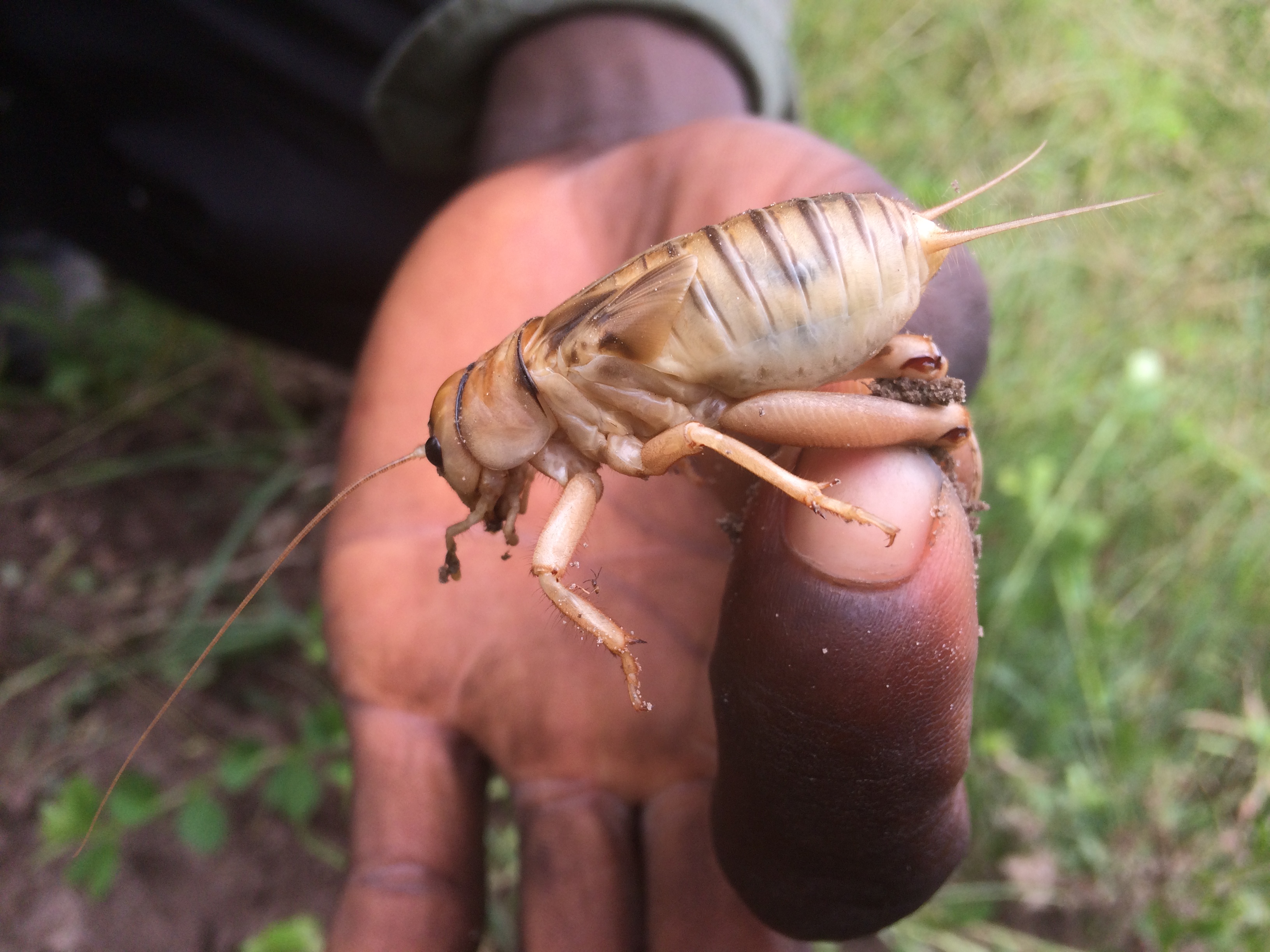|
Brachytrupes Membranaceus
''Brachytrupes membranaceus'', the tobacco cricket, is a species of cricket in the family Gryllidae. It is a pest of crops including young tobacco plants. There are four subspecies, all of which are native to Africa. Subspecies Four subspecies are recognised : *''B. m. colosseus'' Saussure, 1899 – Madagascar *''B. m. hoggarensis'' Chopard, 1941 – Algeria *''B. m. mauritanicus'' Chopard, 1952 – Mauritania *''B. m. membranaceus'' (Drury, 1770) – Kenya, Tanzania and other countries in East Africa Description The adult ''B. membranaceus'' has a plump brown body, a broad blunt head, long antennae and powerful legs. It has a head-and-body length of . Biology ''Brachytrupes membranaceus'' is nocturnal. It digs a burrow that may be deep, with chambers in which it stores food. The burrow is dug by the mandibles, and the fore-legs are used to move loose soil and push it out of the entrance. An adult cricket may form a mound up to in height beside the burrow entrance. The crick ... [...More Info...] [...Related Items...] OR: [Wikipedia] [Google] [Baidu] |
Dru Drury
Dru Drury (4 February 1724 – 15 December 1803) was a British collector of natural history specimens and an entomologist. He had specimens collected from across the world through a network of ship's officers and collectors including Henry Smeathman. His collections were utilized by many entomologists of his time to describe and name new species and is best known for his book ''Illustrations of natural history'' which includes the names and descriptions of many insects, published in parts from 1770 to 1782 with copperplate engravings by Moses Harris. Life Dru Drury was born in Lad Lane, Wood Street, London where his father, also Dru [also given as "Drew"] Drury (1688–1763), was a Freedom of the City of London, citizen, goldsmith and silversmith of the City of London, and his second wife Mary, daughter of Dr Hesketh, chaplain to Anne, Queen of Great Britain, Queen Anne. The elder Dru Drury's grandfather, William, Lord of the Manor of Colne, Cambridgeshire, Colne (Drurys mano ... [...More Info...] [...Related Items...] OR: [Wikipedia] [Google] [Baidu] |
Mandible (insect Mouthpart)
Insect mandibles are a pair of appendages near the insect's mouth, and the most anterior of the three pairs of oral appendages (the labrum is more anterior, but is a single fused structure). Their function is typically to grasp, crush, or cut the insect's food, or to defend against predators or rivals. Insect mandibles, which appear to be evolutionarily derived from legs, move in the horizontal plane unlike those of vertebrates, which appear to be derived from gill arches and move vertically. Grasshoppers, crickets, and other simple insects The mouthparts of orthopteran insects are often used as a basic example of mandibulate (chewing) mouthparts, and the mandibles themselves are likewise generalized in structure. They are large and hardened, shaped like pinchers, with cutting surfaces on the distal portion and chewing or grinding surfaces basally. They are usually lined with teeth and move sideways. Large pieces of leaves can therefore be cut and then pulverized near the mouth ... [...More Info...] [...Related Items...] OR: [Wikipedia] [Google] [Baidu] |
Insects Described In 1770
Insects (from Latin ') are pancrustacean hexapod invertebrates of the class Insecta. They are the largest group within the arthropod phylum. Insects have a chitinous exoskeleton, a three-part body (head, thorax and abdomen), three pairs of jointed legs, compound eyes and one pair of antennae. Their blood is not totally contained in vessels; some circulates in an open cavity known as the haemocoel. Insects are the most diverse group of animals; they include more than a million described species and represent more than half of all known living organisms. The total number of extant species is estimated at between six and ten million; In: potentially over 90% of the animal life forms on Earth are insects. Insects may be found in nearly all environments, although only a small number of species reside in the oceans, which are dominated by another arthropod group, crustaceans, which recent research has indicated insects are nested within. Nearly all insects hatch from eggs. Insect ... [...More Info...] [...Related Items...] OR: [Wikipedia] [Google] [Baidu] |

